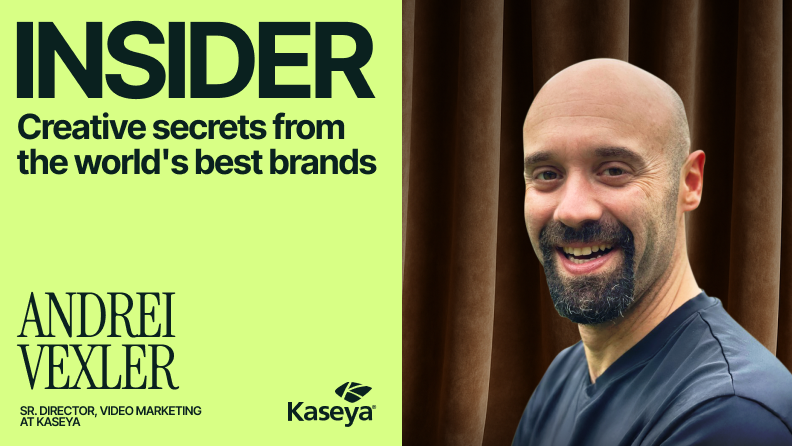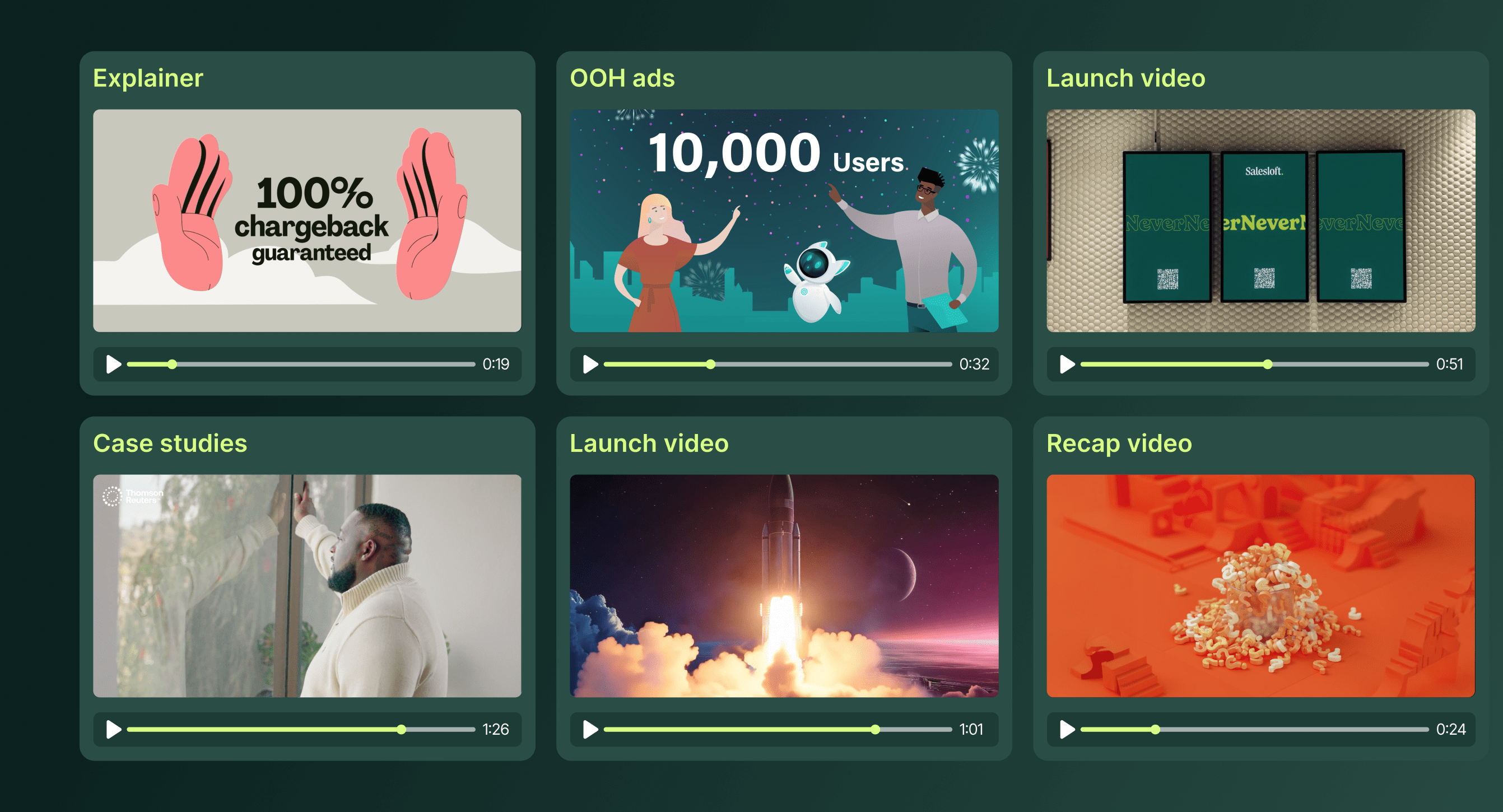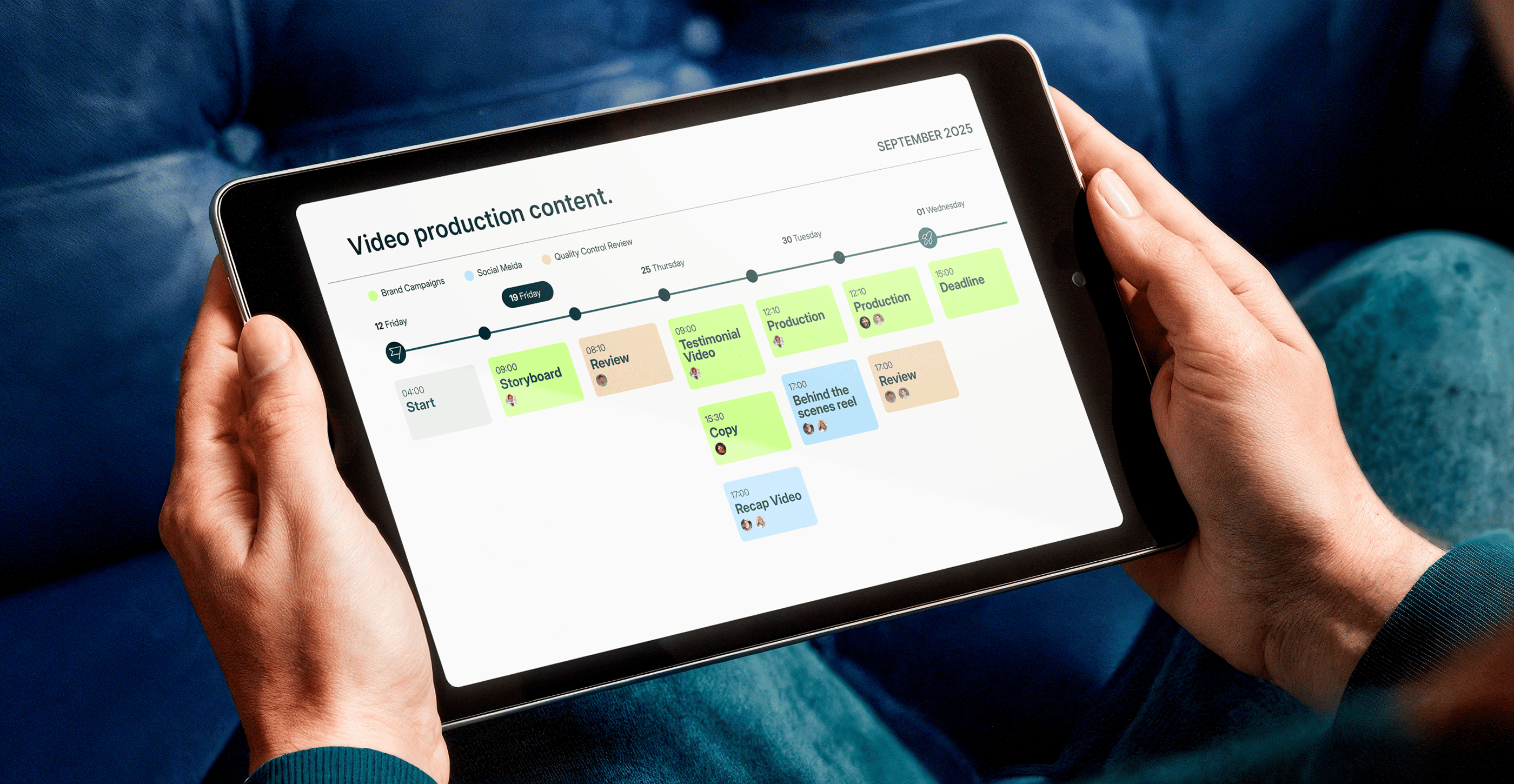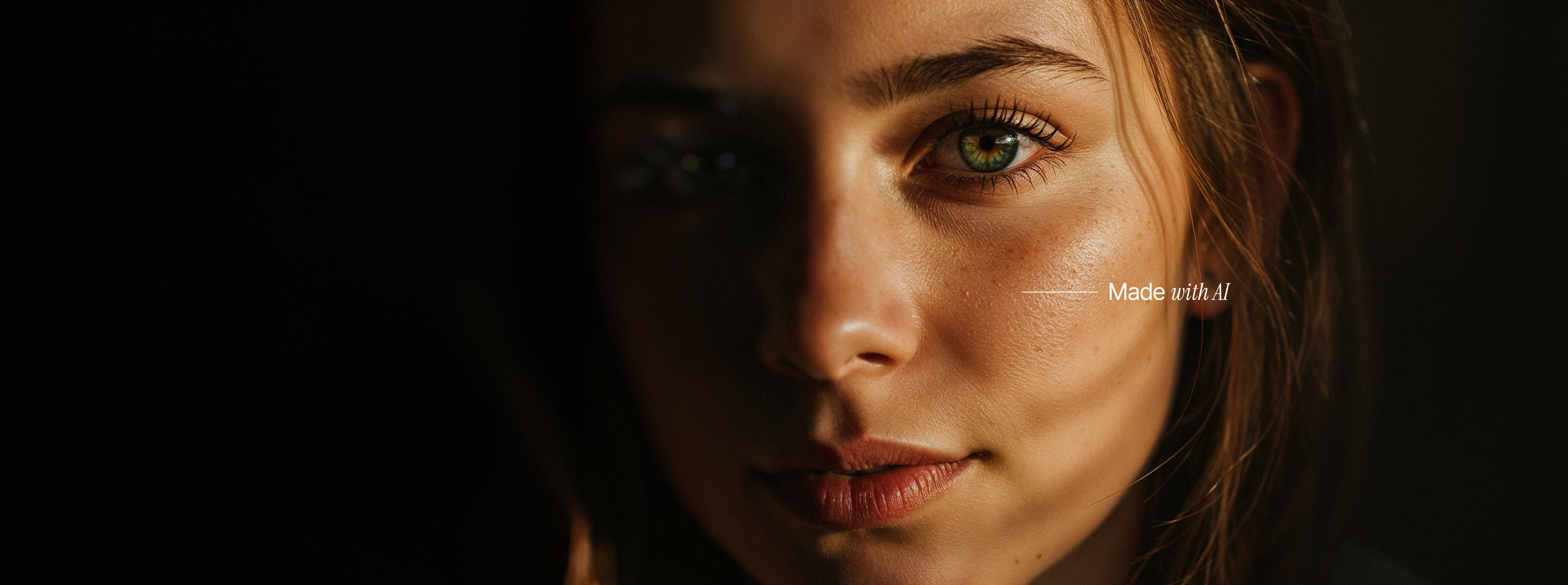From projects to programs: Building scalable, strategic video programs

Video shouldn’t be a reactive, one-off asset. Andrei Vexler from Kaseya shares how to scale video into a strategic, metrics-driven program. From modular content models to stakeholder-aligned KPIs, this is your playbook for turning creative teams into growth engines.
In an era where video is one of the most powerful tools in a marketer’s arsenal, too many teams still treat it like a one-off deliverable. They respond to scattered requests, chase vanity metrics and end up stuck in a cycle of reactive production. But what if video could do more—much more?
Andrei Vexler, Senior Director of Video Marketing at Kaseya, focused on this topic during Superside’s Insider Summit. Vexler drew on decades of experience across agency and in-house roles to show how a video strategy can evolve from a cost center to a growth engine. Through stories, frameworks and tactical advice, he outlined a model where video becomes a scalable, strategic function deeply tied to business outcomes.
What follows are the key insights and lessons from his session—ideal for creative leaders, marketing strategists and anyone tired of chasing views without seeing results.
Creative teams are not just service providers—they’re growth drivers
One of the central themes of Vexler’s talk was a direct challenge to the traditional, transactional role of creative teams in marketing organizations. Too often, creative teams fall into reactive “order-taking” roles, fielding ad-hoc video requests without understanding—or owning—the business impact.
Creative teams feel the need to serve, and don’t realize that they are there to build.

This shift from reactive to proactive isn’t just about workflow—it’s about identity. Vexler emphasized that creative teams must see themselves as strategic partners in driving business outcomes. Instead of merely fulfilling requests, they should be helping to shape initiatives, clarify messaging and amplify impact.
Early-stage creative teams often fall into a cycle of proving their worth by demonstrating output—volume over value. But Vexler encouraged a shift in mindset: The goal isn’t to show how much you can produce, it’s to demonstrate how your work moves the business forward.
This also requires a new kind of conversation with stakeholders. Instead of asking “What video do you want?” Vexler suggested asking, “What problem are you trying to solve?” Video might be the answer—or it might not. But by starting from business objectives, creative teams can ensure they’re solving the right problems in the right ways.
Key takeaway: Creatives must shift from content production to program building—designed around impact, not just output.
Speak the language of the business: Metrics that matter
Vexler emphasized anchoring every video project to clear, measurable business goals—from pipeline generation to internal alignment. An early moment in his career, when he presented video view counts while others spoke to leads and revenue, inspired a mindset shift.
A view isn’t worth much if you just mean somebody saw your content. I see billboards all the time. Where’s the ROI on this? That was the moment where I decided we need to be able to integrate marketing with video in a much more detailed fashion, where every dollar we're putting in, we're able to show and prove that it's delivering X amount back.

Vanity metrics like views and likes are no substitute for indicators like time-on-page, deals influenced or click-throughs. His “prove it or lose it” mindset drives prioritization.
Treat the budget like your personal money.

He also emphasized the need to think in terms of cross-functional metrics—those that matter to the team you're supporting. For example, if you're working with the blog or SEO team, align your video’s success to time on page, pages per session or bounce rate reduction—not video views. Vexler explained that it’s important to focus on the metrics that matter and “not metrics that matter to the video team, it's metrics that matter to the business. If you're doing a project in conjunction with the blog team or with your written content team, what matters to them?”
Here are a few of the real-world measurement approaches he described:
- Behavior-based indicators: Instead of “did they watch it,” ask “what did they do after?” Did time on page improve? Did conversion rates shift?
- Team-driven KPIs: Ask the team you’re working with what they are measured on, and design your content to support those goals.
- Video CTAs: Inspired by YouTube creators who always include “like and subscribe” prompts, Vexler points out that even minor prompts, when intentional, can drive trackable engagement.
He also touched on tracking content as part of integrated experiences, not isolated events. For instance, a video embedded in a blog should be judged by its influence on blog metrics, not video analytics alone.
I wouldn’t be looking at a view count. I’d be asking: Did adding this video increase time on page? Did scroll depth improve?

Lastly, he reminds creatives that not being able to measure impact is a problem they have the power to fix:
“If you can’t measure it, start figuring out how to. Because otherwise, you’ll never be able to prove it was worth doing.”
Key takeaway: Ditch vanity metrics. Creators must align with stakeholder KPIs and design video content that directly advances business goals.
Scalability with a purpose: Build with strategic modularity
True scalability doesn’t just mean doing more—it means working smarter. Vexler shared the story behind Shop Talk, a global video series for Shopify that yielded over 2000% ROI on certain assets by repurposing high-quality interviews for blog, social and sales enablement.
You need a framework that holds up across geographies and verticals but evolves as you learn.

He described a three-tier remix strategy model:
- Dynamic elements: Regularly changed. Includes: topics, interviewees, location, social cutdowns, etc.
- Adaptable elements: Tweaked based on data. Includes: tone, pacing, episode structure, CTA format, host, etc.
- Foundational elements: These define the why and who. Includes: success KPIs, purpose, target audience, concept.
Start to think of it in a way where you have this core of your series that remains the same while being able to change all the variables. Outside of that, you have something that does appear fresh over time, but is still a replicable program.

Key takeaway: Scalability is about frameworks that can flex and replicate—without losing strategic clarity.
Structure liberates creativity: Governance and creative ownership
Contrary to the myth that process kills creativity, Vexler argued that structure is essential.
Stress kills creativity. Not structure.

He advocated for governing projects like product teams: build a roadmap, prioritize ruthlessly and replace ad-hoc intake with strategic planning.
If you take on too much work, you get creative vomit.

One standout strategy? Shift from reactive yes-men to impact negotiators. When resources are limited, ask stakeholders to prove the ROI of their requests—many will self-select out.
Key takeaway: Clear governance empowers teams to focus, move faster, and deliver better work with less burnout.
Video as the strategic engine: Building content ecosystems
A single video shoot should feed blogs, social, ads and sales.
Vexler proposed a five-act content model—like a play—to structure and repurpose content effectively.
Vexler's five-act content model
Act 1: Hook
This is your scroll-stopper. The moment designed to grab attention immediately, whether in a social teaser or pre-roll ad. It might be a bold statement, an unexpected question or a compelling visual—anything that draws your audience within seconds.
It’s your standalone moment that leads people in.

Act 2: Setup
Here, you establish context—framing the challenge, insight or narrative that the video will explore. These moments are great for blog intros, campaign messaging or email subject lines. The goal is to show you understand the viewer’s world.
Act 3: Core insight
This is the meat of your message: the solution, the idea or the customer story. It’s often the part that stands alone as a hero video. It’s also the most versatile asset, suitable for everything from landing pages to product education.
It’s your product solution, customer success story or main statement.

Act 4: Application
Here, you move from ideas to action—how it works, proof points, outcomes. This content is valuable for sales enablement, demos, onboarding and training. It shows how your message translates into real results.
Act 5: CTA
The final act provides a clear call to action or takeaway. Whether it’s clicking a link, downloading a resource or booking a meeting, this piece drives conversion. It’s also ideal for retargeting campaigns and post-funnel communications.
By breaking down content this way, teams can build once and distribute many times—across formats, teams and stages of the funnel.
One well-built video should fuel an entire content ecosystem.

By planning modularly, marketers and creatives maximize reach without extra production time or cost.
Key takeaway: Think video-first. Design with adaptability in mind to generate full-funnel content from a single creative asset.
From production shop to strategic partner: Start small, think big
Ultimately, the session was a call to reframe the role of creative teams.
Never once did I say ‘I can make cool stuff.’ The question is, ‘Can I have an impact in this business with video?’

Through listening and cross-functional alignment, creatives can lead initiatives that deliver real business results. The path to impact starts with curiosity. Shift from executors to partners by asking smarter questions and thinking like strategists.
So where should you begin? Start by speaking the language of your business. Look for repeatable requests across teams and build a named, structured format that solves a real business problem.
And remember, it’s not about having a massive budget, it’s about making a massive impact.
Tess is a Senior Content Specialist at Superside, where she crafts compelling content for SMBs and enterprise businesses. With over 10 years of experience, Tess has honed her skills writing for both B2B and B2C audiences, working across agencies and in-house creative teams. Her expertise spans industries, including international relations, tech, hospitality, and the music industry, where she has a knack for blending storytelling with strategic insights. When she’s not busy writing, you’ll likely find her curled up with a good book, binge-watching the latest Netflix obsession or hiking.
You may also like these

16 best B2B SaaS video examples from 2025
Today’s SaaS customers don’t have time to read 50-page whitepapers or sit through lengthy presentations. They skim, compare and decide on a product in a matter of minutes.With video, you can quickly demonstrate your value and drive more free trials and subscriptions. In fact, 93% of B2B buyers say video builds brand trust, and 91% of consumers feel more confident to purchase a product after they’ve watched a video.In 2026, a successful SaaS video strategy engages prospects at every stage of the marketing funnel and cuts through the noise in a crowded market. Explainer videos can, for example, build initial brand awareness, while product demos can deepen consideration. Shorter demos, feature deep dives and launch videos that also serve as PR tools now reign supreme.Already feeling a tad overwhelmed? We get it. It’s tough to produce a consistent stream of high-quality video, especially if your in-house team is stretched to the max.Let’s first explore the types of SaaS videos that work like a charm and unpack 2025’s best SaaS video marketing examples to inspire your 2026 video strategy.
8 best video post-production services of 2025
Welcome to post-production, the stage in the video production process where raw footage becomes visual content that connects, delights and drives results. Here, editors, colorists, sound designers, animators and advanced technology work in concert to transform ideas into powerful visual stories.Today’s customers expect both authenticity and quality in the videos served in their feeds. User-generated content (UGC) can increase conversions by over 161%. Combine this format with professionally edited content, and you can expect even higher video engagement.But excellent video production can be resource-intensive, and many marketers (37%) admit they don’t quite know where to start. At the enterprise level, it also takes a skilled team (adept at everything from planning, editing and performance analysis to motion design and sound engineering) to create videos that drive ROI. In many instances, teams lack the skills or simply don’t have the capacity.If you’re on the hunt for a flexible video production partner who can help you up your views and shares, you’ve found the right page. In this article, we unpack how to choose a video post-production partner, what these companies should offer you and who the best picks are right now.How to choose a video post-production company
10 video production subscription companies & services in 2025
Today’s enterprise brands face a massive challenge: To build brand awareness and rope in more customers, they must produce dozens of videos in various formats, from short teasers and social reels to multilingual product demos and thought-leadership interviews. And the demand isn’t slowing down. 83% of consumers want even more video from brands than before.Most creative teams are stuck. Senior leaders at organizations of all sizes, from nimble startups to SaaS powerhouses, drown in overflow video work while other strategic tasks are deprioritized. Many creative and marketing leads are also burned out, a challenge our Overcommitted report unpacks.It’s no surprise, then, that video production ranks as the second most outsourced service, after paid social. However, many companies have begun to realize that traditional agencies and freelancers, once the default choices for outsourced creative work, no longer meet their needs. Agencies are slow, costly and cumbersome, while freelancers lack the capacity to scale.If this situation rings true, a video production subscription service could be a lifeline. These providers deliver a ready team of directors, editors, animators and post-production experts at one straightforward monthly rate. Let's check the top 10 and choose the best one for your company below.












